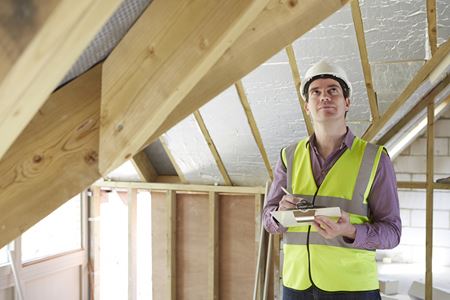What Happens During a Roof Inspection: A Comprehensive Guide

A roof inspection is a critical aspect of maintaining the integrity and longevity of your home's roofing system. Whether you're a homeowner looking to assess the condition of your roof or a prospective buyer wanting to ensure a property's structural soundness, understanding what happens during a roof inspection is essential. In this comprehensive guide, we'll delve into the key components and processes involved in a thorough roof inspection.
Initial Assessment and Preparation
The roof inspector begins by conducting an initial assessment of the property's exterior and interior. This may involve reviewing the property's history, including any past roofing repairs or replacements, and discussing any concerns or issues raised by the homeowner. Additionally, the inspector will gather the necessary tools and safety equipment before accessing the roof.
Exterior Inspection
Once on the roof, the inspector thoroughly examines the exterior components, including the shingles, flashing, gutters, vents, and chimneys. They look for signs of damage, such as missing or broken shingles, cracked flashing, rusted vents, or deteriorated caulking. They also check for signs of water damage, such as stains or moss growth, which can indicate potential leaks.
Structural Assessment
During the inspection, the inspector evaluates the structural integrity of the roof by assessing the condition of the underlying decking and support structures. They look for signs of sagging or unevenness, which may indicate underlying structural issues. Additionally, they inspect the attic space for proper insulation, ventilation, and signs of water intrusion, such as mold or mildew growth.
Moisture Detection
Moisture detection is a crucial part of the roof inspection process. Using specialized tools such as moisture meters or infrared cameras, the inspector identifies areas of trapped moisture within the roofing system. This helps detect hidden leaks or areas of water damage that may not be visible to the naked eye.
Documentation and Reporting
Throughout the inspection process, the inspector takes detailed notes and photographs to document their findings. This documentation serves as a comprehensive record of the roof's condition and any issues identified during the inspection. Once the inspection is complete, the inspector provides a detailed report outlining their findings, including recommendations for repairs or maintenance.
Post-Inspection Consultation
After completing the inspection, the inspector meets with the homeowner to discuss their findings and address any questions or concerns. They review the inspection report together, explaining any issues identified and recommending appropriate courses of action. Depending on the severity of any problems found, the inspector may also provide estimates for repairs or replacements.
Follow-Up and Maintenance Recommendations
Following the inspection, the homeowner receives a copy of the inspection report along with recommendations for follow-up maintenance or repairs. This may include scheduling regular roof maintenance, addressing minor repairs promptly, or planning for a roof replacement in the future.
In conclusion, a roof inspection is a comprehensive process that involves assessing the condition of the roof's exterior, interior, and underlying structures. By identifying any issues early on and addressing them promptly, homeowners can protect their investment and ensure the long-term integrity of their roofing system. Whether you're buying a new home or simply maintaining your current one, scheduling regular roof inspections is essential for peace of mind and property preservation.
When you need a roofing company, trust Top Crew Construction LLC. Call us today to schedule your roof inspection in Fort Worth.
REACH OUT TO YOUR FORT WORTH ROOFING COMPANY TODAY!